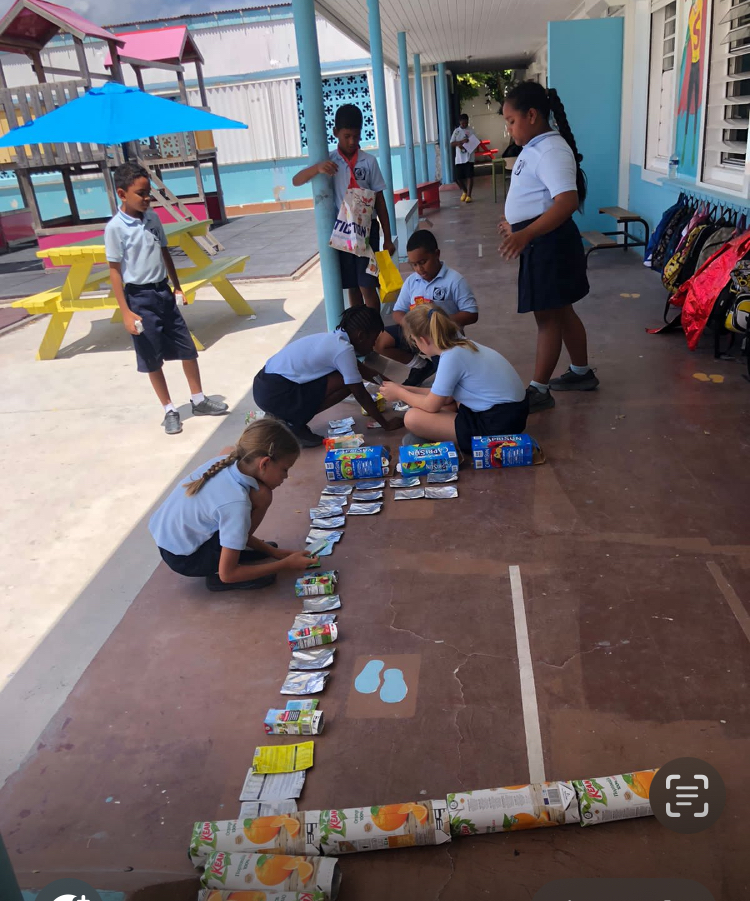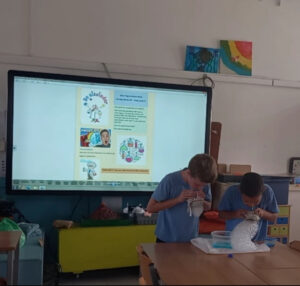Part 2: Policy and Decision-Making
To address the evolving needs of Generation Z, schools have adapted their policies to foster a more student-centered learning environment. At Sr. Regina School, a significant shift has been the transition to a Portfolio School model, granting students greater autonomy and responsibility in their learning. This approach aligns with Gen Z’s preference for self-directed, personalized educational experiences.
The “Brain Heroes” executive functions program is another key initiative, designed to help students develop essential skills for managing their learning and behavior. This empowers them to take ownership of their educational journey.
Schools actively seek feedback from both parents and students through surveys to ensure that policies meet the community’s needs. This input is crucial in shaping and refining policies.
The Catholic schools also implemented Digital Citizenship and Media Literacy Program
Recognizing the pervasive influence of technology and social media in the lives of Generation Z, Sr. Regina School has implemented a comprehensive Digital Citizenship and Media Literacy Program. This initiative aims to equip students with the critical thinking skills needed to navigate the digital world responsibly. The program covers topics such as online safety, ethical use of information, managing digital footprints, and understanding media bias.
This policy shift not only addresses the challenges of the digital age but also aligns with Generation Z’s natural affinity for technology. By fostering digital literacy, the school ensures that students are prepared to engage thoughtfully and safely in an increasingly connected world.
Educating Gen Z students presents unique challenges, largely due to their digital-first lifestyle.
Key challenges include:
Maintaining attention: Gen Z’s strong connection to their devices often leads to distractions from social media and online entertainment.
Short attention spans: The trend of consuming quick, bite-sized content has shortened attention spans, making engagement difficult.
Keeping up with technology: The rapid pace of technological change necessitates constant updates to school resources and ongoing training for both teachers and students.
Digital equity: Ensuring equal access to technology and high-speed internet remains a challenge.
Soft skills development: Beyond technical skills, there is a growing need to focus on communication, collaboration, and emotional intelligence.
To address these challenges, schools have implemented strategies that balance digital engagement with meaningful interactions. For instance, while technology is integral to classrooms, collaborative projects and hands-on activities are prioritized to deepen learning engagement. This balance aims to create an environment where Gen Z students can excel academically while developing essential life skills.
In today’s educational landscape, finding the right balance between digital tools and face-to-face interaction is key to keeping Gen Z students engaged and motivated. Schools have adopted several strategies to tackle the challenges posed by this tech-savvy generation, including:
Interactive technology: Smart boards, educational apps, and gamification make lessons more captivating and engaging.
Flipped classroom model: Students watch instructional videos at home, freeing up class time for hands-on activities that deepen understanding.
Clear policies on device usage: Schools have established guidelines for device use in classrooms to minimize distractions while leveraging technology for learning.
Some teachers struggle with the empowered nature of today’s students—who are independent, verbally strong, and socially resilient—while others see this as an opportunity to foster self-directed learning. To address these varying perspectives, the school has introduced workshops and mastermind sessions to help teachers navigate these dynamics effectively.
Technological innovations have also enhanced learning. Schools have embraced tools like Google Classroom, Canvas, and Microsoft Teams to support online learning, collaboration, and communication. The BYOD (Bring Your Own Device) policy, which began at St. Dominic High School and expanded to primary schools, further supports digital literacy and eases access to online resources.
To ensure that policies reflect the diverse voices within the community, schools actively gather feedback from students and parents through both digital and paper surveys. Digital platforms like Google Forms and SurveyMonkey streamline this process, while paper surveys reach families with limited access to technology.
The integration of technology has fundamentally transformed the learning environment and teaching methods. Teachers must stay updated with the latest trends, using technological advancements to enhance instruction. Additionally, technology has diversified how student progress is measured, placing more emphasis on interactive and digital learning experiences.
Technological tools have broadened students’ horizons, exposing them to a wealth of educational resources and social interactions. Effective tools for engaging Gen Z students include:
Nieuwsbegrip: A Dutch comprehension platform that integrates current events into reading comprehension lessons.
Lesson-Up App: An interactive platform for dynamic lesson creation.
Gynzy: A digital teaching tool offering interactive lessons and assessments.
Junior Einstein: An online learning platform focused on foundational subjects.
Kahoot: A game-based learning platform.



